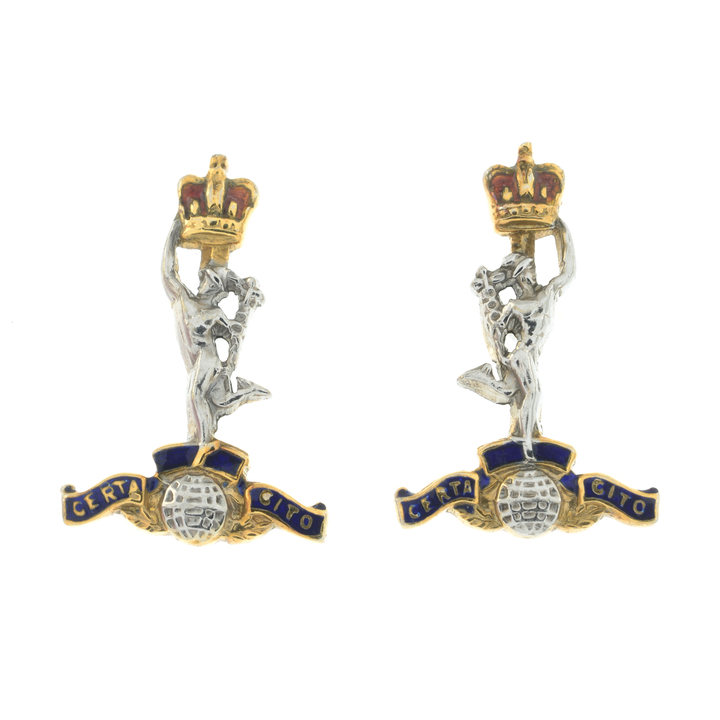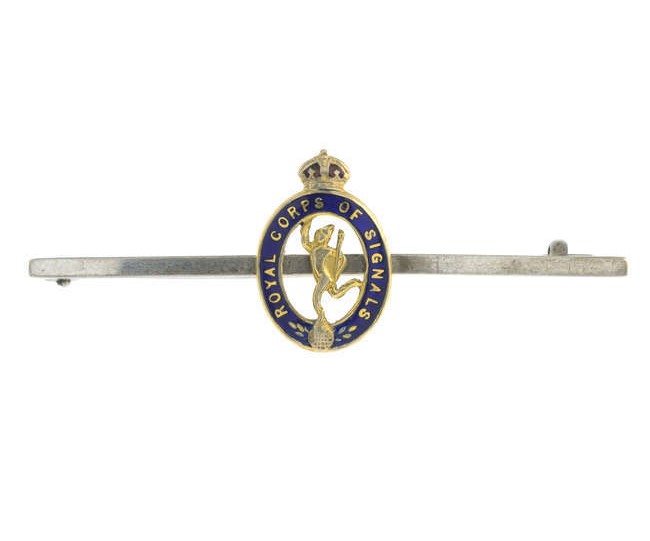The Royal Corps of Signals, a vital component of the British Army, has a rich history that spans over a century. Established in 1920, this corps has played a crucial role in maintaining communication on the battlefield. They handle all the ways soldiers talk to each other, whether it's through radios, computers, or other high-tech equipment. Their responsibility is to make sure that everyone in the army can communicate effectively and securely, whether they're on the battlefield or in a command centre. In this blog, we explore the history of this important institution and its symbolism.
The History of the Royal Corps of Signals
The history of the Royal Signals Corps dates back to the late 19th century when the use of telegraphy became increasingly crucial for military communication. In 1884, the Telegraph Battalion Royal Engineers was established, marking the initial steps towards a specialised signalling unit. As technology advanced, so did these units. This ultimately led to the formation of the Royal Corps of Signals in 1920.
During World War II, the Corps played an undeniably crucial role in enabling communication between troops. They were instrumental in maintaining secure and efficient lines of communication. This significantly contributed to the success of Britain's military operations. The Corps continued to adapt to changing technologies in the post-war era, incorporating innovations like radio and later, digital communication systems.
Over the years, the Royal Signals Corps has been involved in numerous conflicts and peacekeeping missions worldwide. They have played key roles in operations in places like Korea, the Falkland Islands, Iraq, Afghanistan, and more. The Corps has continually embraced emerging technologies. Today, the Royal Signals Corps remains an integral part of the British Army, ensuring the effective communication of information in the modern era.
Royal Corps of Signals Symbolism
The cap badge of the corps clearly reflects their aims and duties. We see Mercury - the Roman messenger god, atop a globe. He is flagged by the corps' motto: the Latin phrase 'certa cito' which translates to Swift and Sure.
Interestingly, members of the corps refer to this image of Mercury as Jimmy. It's unclear where this odd nickname originated from. One theory suggests it is derived from the name of the Italian sculptor, Giambologna, who originally carved the statue of Mercury that the badge borrows. This theory is not particularly popular, however. A more commonly accepted story is that it is named after a member of the Royal Signals; Jimmy Emblen, who represented the Royal Corps of Signals as a boxer as was the British Army Champion in 1924.
Garrard Jewellers
Our upcoming Jewellery auction will include a pair of earrings styled after the Royal Corps of Signals badge. These 9ct gold earrings are by the internationally renowned jeweller: Garrard.
Garrard is sometimes said to be the oldest jewellery house in the world and holds a prestigious position as the former Crown Jeweller of the United Kingdom. The brand has a long-standing association with the British royal family and has crafted numerous pieces of regalia and ceremonial jewellery, including the Crown Jewels and Princess Diana's engagement ring. The company was established by George Wicks in 1735 and became a prominent jeweller in London.
Over almost 300 years, Garrard has continuously created exquisite and distinctive pieces, showcasing a commitment to craftsmanship and attention to detail. The brand's reputation for quality and elegance has made it a favourite among those seeking one-of-a-kind jewellery pieces. Earlier in 2023, we sold a very special piece by Garrard, a stick-pin that was once gifted by George V.
Royal Corps of Signals Jewellery at Auction
This lot, although particularly lovely as it is by Garrard, is not the first time we've had jewellery bearing the Royal Corps of Signals badge through our doors. In previous auctions, we've seen several similar lots, as shown below. What sets this upcoming lot apart from others - aside from its prestigious maker, is that it is a pair of earrings. Typically, when we see the Royal Corps of Signals in jewellery they are normally represented on brooches to be attached to lapels or hats. The fact that lot 2 is a pair of earrings, combined with the name Garrard, makes them especially appealing and unique.















